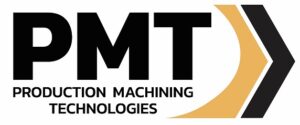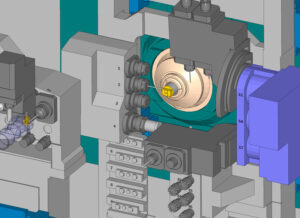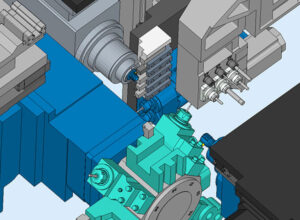Precision manufacturing as evolved significantly over the years, introducing technologies that allow for greater efficiency and exactness. Among these technologies, Swiss machining stands out for its ability to produce extremely precise components. This blog post will explore the basics of Swiss machining, its unique advantages, and its diverse applications across various industries.
What is Swiss Machining?
Swiss machining, also known as Swiss screw machining or Swiss automatic lathe work, is a highly precise manufacturing process. It transforms metal stock into complex, slender components that meet very tight tolerances. Unlike conventional lathes where the material is static, except for rotation, Swiss machines use a sliding headstock to move the workpiece longitudinally. This method allows the stock to pass through a guide bushing for additional support. This guide bushing reduces deflection and vibration to maintain precision even with intricate cuts.
A key feature of Swiss machining is its capability to perform multiple machining operations simultaneously. It does this by employing a rotating workpiece that has various cutting tools. This not only enhances the precision but also improves the efficiency and cost-effectiveness of the production process.
Key Features:
- Compact Size: Swiss machines are compact and typically designed for high accuracy. They can handle parts with diameters as small as 0.5 millimeters.
- Complex Operations: These machines can perform multiple operations — such as turning, milling, drilling, and tapping — all within a single setup.
The History of Swiss Machining
Swiss machining originated in the heart of the Swiss watchmaking industry in the mid-19th century. This innovation was attributed to Jakob Schweizer. With Switzerland’s dominance in quality watchmaking, there was a burgeoning demand for the production of smaller, more precise components for pocket watches and wristwatches. Schweizer revolutionized the industry by developing a lathe with a sliding headstock that moved along the longitudinal axis. Unlike traditional lathes, which primarily rotate the workpiece, this allowed for sliding and rotating. This novel design nearly eliminated the risk of flexing or damaging delicate parts. With the complete support of the workpiece, watchmakers were now able to machine parts with tiny diameters with high precision.
By the 1870s, Schweizer’s creation had been perfected and began to be mass-produced. It quickly spread across global markets. The innovation of Swiss Machining not only catered to the immediate needs of the watchmaking industry but also set a new standard for precision machining.
Over the decades, Swiss machining has evolved significantly, though it still retains its original principal: the ability to efficiently produce small, thin parts with tight tolerances that other machines cannot match. Today, while the machines bear little resemblance to their 19th-century predecessors, the core principles and applications of Swiss machining have permeated industries beyond watchmaking, including medical devices, aerospace, automotive, and electronics, underlining its universal appeal in precision manufacturing.
Swiss Lathe vs. Traditional Lathe
Comparing Swiss lathes to traditional lathes reveals significant differences in design and functionality that directly impact their machining capabilities:
- Guide Bushing Support: One of the primary distinctions of the Swiss lathe is its use of a guide bushing. This component snugly supports the workpiece very close to the cutting action, which stabilizes the material and reduces deflection. This is particularly advantageous when machining elongated and slender parts. Traditional lathes, on the other hand, do not offer this feature, which can lead to greater material flex and lower precision, especially in complex, long parts.
- Kinematics and Movement: Swiss lathes are distinguished by their dynamic movement; the workpiece advances through the machine and past the tooling in a linear fashion, which contrasts sharply with the primarily rotational movement of workpieces in traditional lathes. This allows for precise machining along the entire length of the workpiece, which is essential for the high-precision requirements of industries like aerospace and medical devices.
- Tooling Flexibility: Swiss lathes generally feature multiple tool stations and can perform several cutting operations simultaneously. This setup is vastly different from traditional lathes, which typically have fewer tooling options and require manual tool changes, leading to longer production times and less efficiency.
- Machining Environment: Due to the controlled and stable machining environment provided by the sliding headstock and guide bushing in Swiss lathes, they are able to achieve superior surface finishes and maintain tighter tolerances. In contrast, traditional lathes might struggle with vibration and instability, especially as the length of the workpiece increases relative to its diameter.
Advantages of Swiss Style Lathes Over Traditional Machining
Swiss style lathes offer a multitude of advantages over traditional machining methods, which make them invaluable in modern manufacturing settings:
- Enhanced Precision and Accuracy: The precise control over the workpiece movement and tooling in Swiss lathes allows for the production of parts with extremely tight tolerances and complex geometries. This level of precision is crucial for applications in sectors that demand the utmost accuracy, such as the manufacturing of medical implants or the intricate components used in microelectronics.
- Increased Production Efficiency: Swiss lathes can complete multiple operations like drilling, milling, turning, and tapping all in one setup without the need to change machines or re-fixture the workpiece. This capability significantly reduces cycle times and increases throughput, making Swiss style lathes a cost-effective solution for high-volume production.
- Material Versatility: Swiss lathes are adept at handling a wide range of materials, from soft plastics to hard metals like titanium, which is often used in medical device manufacturing due to its strength and biocompatibility. The flexibility to switch between different materials without compromising on machining quality or precision makes Swiss lathes particularly versatile.
- Reduced Waste and Cost: The design of Swiss lathes ensures that material usage is optimized, leading to minimal waste. This efficient use of materials, coupled with the reduction in labor costs due to automated processes, drives down overall production costs.
- Scalability for Complex Parts Production: As components become more complex and miniaturized, Swiss lathes provide a scalable solution for precision manufacturing. The ability to efficiently produce small, intricate parts that meet stringent quality standards is a significant advantage over traditional machining methods, which might require multiple setups or even different machines to achieve similar results.
By leveraging these advanced capabilities, Swiss style lathes not only outperform traditional lathes in terms of precision and efficiency but also offer substantial economic benefits, making them a preferred choice in the competitive landscape of manufacturing technology.
Modern Swiss Turn Machining
Today's Swiss machining represents a significant leap in precision and productivity, designed to handle some of the most complex parts in the world. This process has evolved to meet the increasing demands of high-volume production of intricate components across various industries including: medical devices, aeronautics, automotive or electronics. Combining Swiss turn machines with cutting-edge CAM software like Hexagon Esprit, is how some of the most advanced manufacturing shops in the word produce their parts efficiently and effectively.
To learn more about Swiss Machining please see the additional resources below.
If you're looking for help standing up Swiss Machining in your shop or new a new Swiss CAM software system, don't hesitate to get in touch with us!


